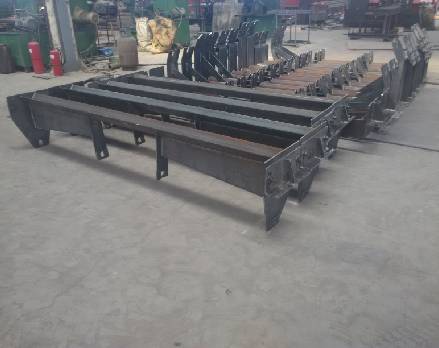 Afrikaans
Afrikaans  Albanian
Albanian  Amharic
Amharic  Arabic
Arabic  Armenian
Armenian  Azerbaijani
Azerbaijani  Basque
Basque  Belarusian
Belarusian  Bengali
Bengali  Bosnian
Bosnian  Bulgarian
Bulgarian  Catalan
Catalan  Cebuano
Cebuano  Corsican
Corsican  Croatian
Croatian  Czech
Czech  Danish
Danish  Dutch
Dutch  English
English  Esperanto
Esperanto  Estonian
Estonian  Finnish
Finnish  French
French  Frisian
Frisian  Galician
Galician  Georgian
Georgian  German
German  Greek
Greek  Gujarati
Gujarati  Haitian Creole
Haitian Creole  hausa
hausa  hawaiian
hawaiian  Hebrew
Hebrew  Hindi
Hindi  Miao
Miao  Hungarian
Hungarian  Icelandic
Icelandic  igbo
igbo  Indonesian
Indonesian  irish
irish  Italian
Italian  Japanese
Japanese  Javanese
Javanese  Kannada
Kannada  kazakh
kazakh  Khmer
Khmer  Rwandese
Rwandese  Korean
Korean  Kurdish
Kurdish  Kyrgyz
Kyrgyz  Lao
Lao  Latin
Latin  Latvian
Latvian  Lithuanian
Lithuanian  Luxembourgish
Luxembourgish  Macedonian
Macedonian  Malgashi
Malgashi  Malay
Malay  Malayalam
Malayalam  Maltese
Maltese  Maori
Maori  Marathi
Marathi  Mongolian
Mongolian  Myanmar
Myanmar  Nepali
Nepali  Norwegian
Norwegian  Norwegian
Norwegian  Occitan
Occitan  Pashto
Pashto  Persian
Persian  Polish
Polish  Portuguese
Portuguese  Punjabi
Punjabi  Romanian
Romanian  Russian
Russian  Samoan
Samoan  Scottish Gaelic
Scottish Gaelic  Serbian
Serbian  Sesotho
Sesotho  Shona
Shona  Sindhi
Sindhi  Sinhala
Sinhala  Slovak
Slovak  Slovenian
Slovenian  Somali
Somali  Spanish
Spanish  Sundanese
Sundanese  Swahili
Swahili  Swedish
Swedish  Tagalog
Tagalog  Tajik
Tajik  Tamil
Tamil  Tatar
Tatar  Telugu
Telugu  Thai
Thai  Turkish
Turkish  Turkmen
Turkmen  Ukrainian
Ukrainian  Urdu
Urdu  Uighur
Uighur  Uzbek
Uzbek  Vietnamese
Vietnamese  Welsh
Welsh  Bantu
Bantu  Yiddish
Yiddish  Yoruba
Yoruba  Zulu
Zulu Understanding the Importance of Roller Lagging in Conveyor System Performance and Maintenance Essentials
Understanding Roller Lagging Enhancing Conveyor Efficiency
Roller lagging is a crucial component in various industries that rely on conveyor systems for material handling. As the efficiency of these systems can significantly impact productivity and operational costs, understanding roller lagging is essential for engineers, managers, and maintenance professionals. This article delves into the fundamentals of roller lagging, its benefits, types, applications, and considerations for its effective implementation.
What is Roller Lagging?
Roller lagging refers to the process of covering the surface of conveyor rollers with a material that enhances their performance. The primary purpose of lagging is to increase friction between the roller and the conveyed material, reducing slippage and improving system efficiency. This enhancement is vital in applications where materials are heavy, sticky, or prone to sliding off the rollers, such as in mining, agriculture, and manufacturing.
Benefits of Roller Lagging
1. Increased Friction The primary benefit of roller lagging is the increase in grip between the roller and the material being transported. This increase in friction minimizes slippage, ensuring smoother operation and reducing wear and tear on the conveyor system.
2. Reduced Wear By providing a protective layer, lagging reduces the direct contact of the roller with the materials being transported. This reduction in wear not only extends the life of the rollers but also minimizes maintenance costs and downtime, allowing for more reliable operation.
3. Improved Traction on Wet or Sticky Materials Many materials can become slippery when wet or sticky, causing challenges in transport. Roller lagging can significantly improve traction in these conditions, ensuring that materials are effectively conveyed and minimizing breakage or loss.
4. Enhanced Safety Improved grip on conveyor systems reduces the likelihood of materials slipping off the rollers, decreasing the risk of accidents. This enhancement in safety is paramount in industrial environments where heavy machinery and materials are handled.
roller lagging

Types of Roller Lagging
Roller lagging materials vary widely, catering to diverse industry needs. The most common types of roller lagging include
1. Rubber Lagging One of the most prevalent materials, rubber lagging provides excellent traction and is suitable for various applications, particularly in heavy-duty environments.
2. Ceramic Lagging For high-wear applications, ceramic lagging offers exceptional durability and resistance to abrasion, making it ideal for extreme conditions typically found in mining and quarrying.
3. Polyurethane Lagging Known for its resilience, polyurethane lagging offers a balance between traction and durability, often used in lighter-duty applications.
4. Metal Lagging In some industrial settings, metal lagging provides enhanced service life and is often used in high-temperature environments.
Considerations for Implementation
When selecting roller lagging, it is crucial to consider factors such as the type of material being conveyed, environmental conditions, and the operational demands of the conveyor system. Proper installation and alignment of lagging are equally important to maximize its benefits. Regular inspections and maintenance can help identify wear patterns, ensuring timely replacement and maximizing the performance of the conveyor system.
In conclusion, roller lagging is an integral part of conveyor technology that enhances efficiency, safety, and lifespan. By understanding its benefits, types, and proper implementation, industries can optimize their material handling processes, leading to improved productivity and reduced operational costs. As technology continues to advance, the development of more innovative lagging solutions will likely further enhance the capabilities of conveyor systems across various sectors.
-
Revolutionizing Conveyor Reliability with Advanced Rubber Lagging PulleysNewsJul.22,2025
-
Powering Precision and Durability with Expert Manufacturers of Conveyor ComponentsNewsJul.22,2025
-
Optimizing Conveyor Systems with Advanced Conveyor AccessoriesNewsJul.22,2025
-
Maximize Conveyor Efficiency with Quality Conveyor Idler PulleysNewsJul.22,2025
-
Future-Proof Your Conveyor System with High-Performance Polyurethane RollerNewsJul.22,2025
-
Driving Efficiency Forward with Quality Idlers and RollersNewsJul.22,2025





























